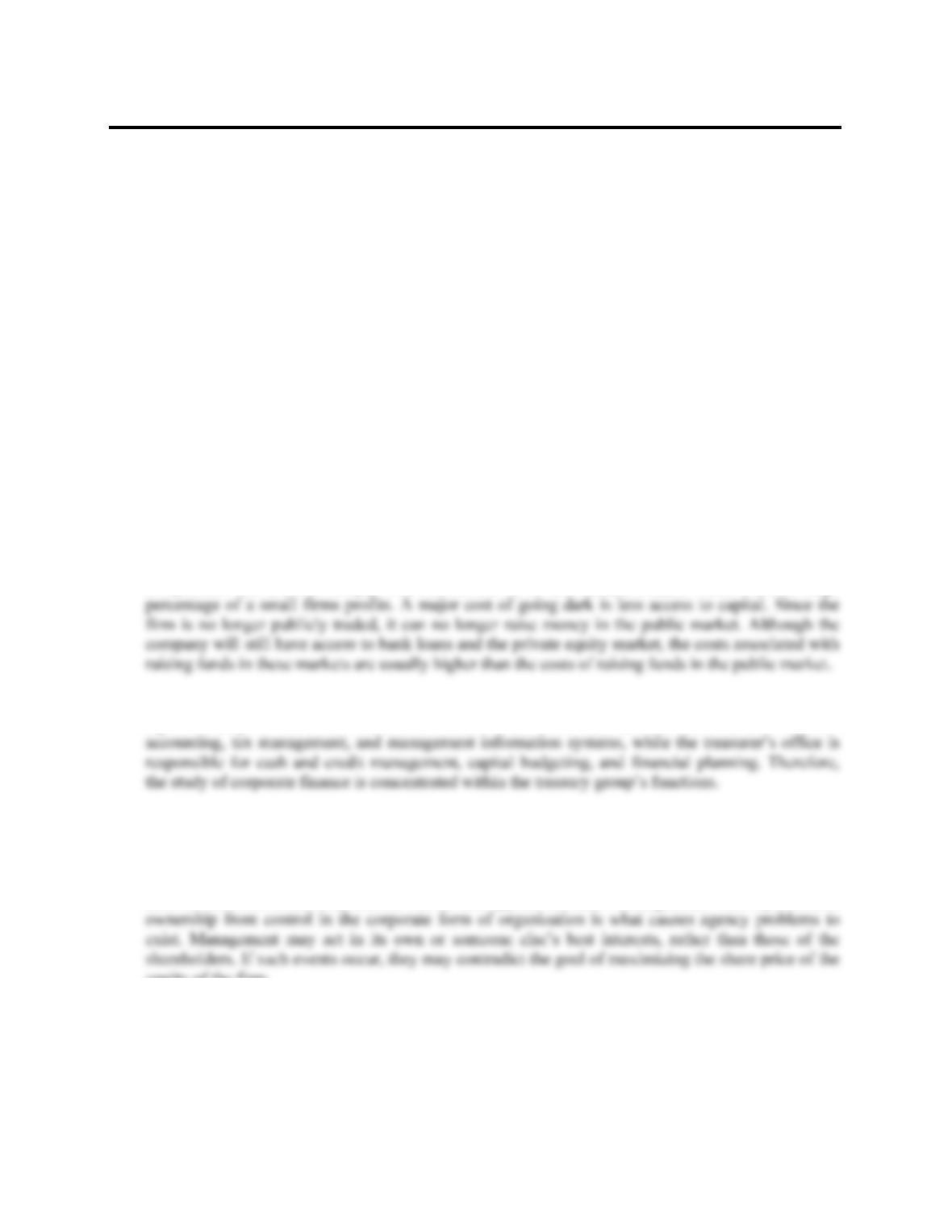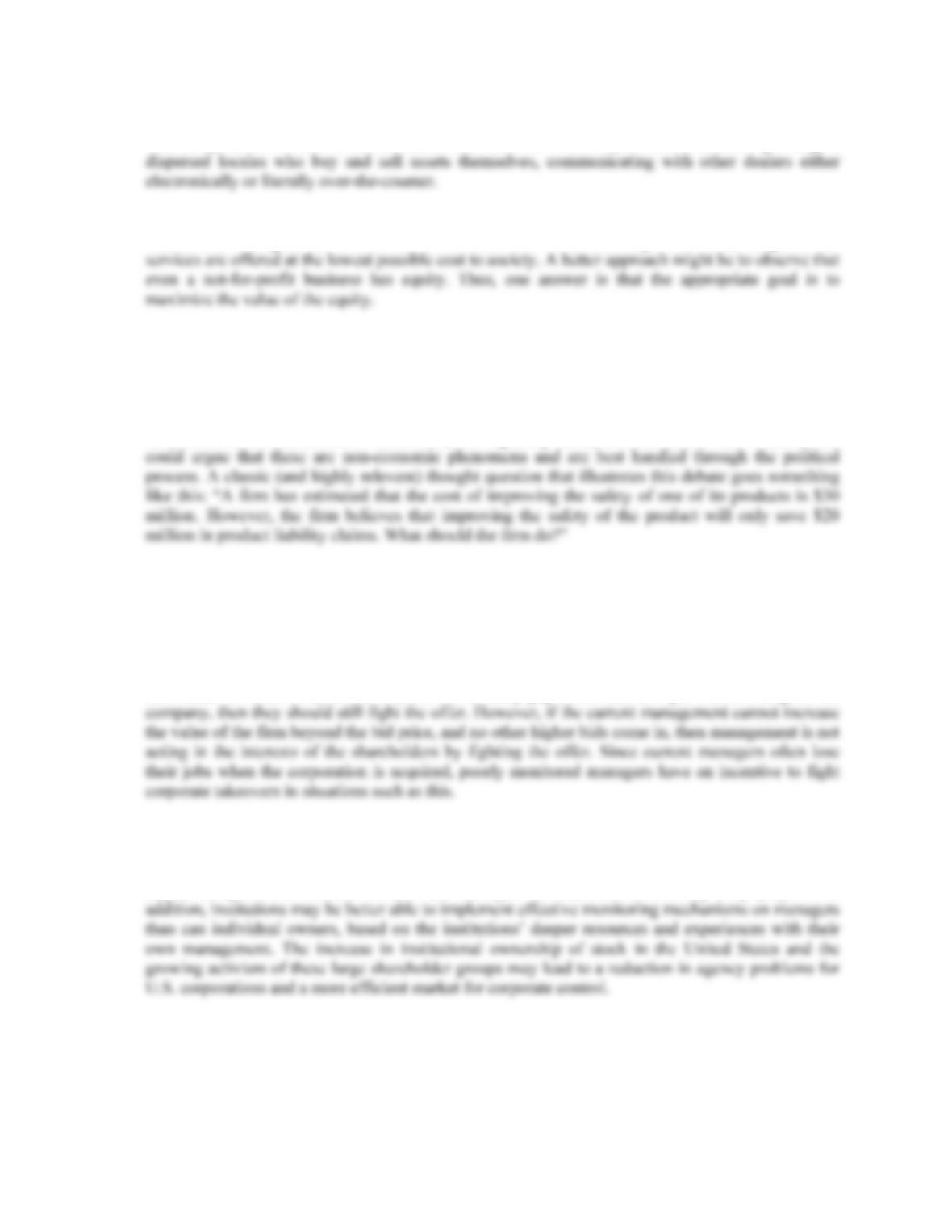B-2 SOLUTIONS
9. In auction markets like the NYSE, brokers and agents meet at a physical location (the exchange) to
match buyers and sellers of assets. Dealer markets like NASDAQ consist of dealers operating at
10. Such organizations frequently pursue social or political missions, so many different goals are
conceivable. One goal that is often cited is revenue minimization; i.e., provide whatever goods and
11. Presumably, the current stock value reflects the risk, timing, and magnitude of all future cash flows,
both short-term and long-term. If this is correct, then the statement is false.
12. An argument can be made either way. At the one extreme, we could argue that in a market economy,
all of these things are priced. There is thus an optimal level of, for example, ethical and/or illegal
behavior, and the framework of stock valuation explicitly includes these. At the other extreme, we
13. The goal will be the same, but the best course of action toward that goal may be different because of
differing social, political, and economic institutions.
14. The goal of management should be to maximize the share price for the current shareholders. If
management believes that it can improve the profitability of the firm so that the share price will
exceed $35, then they should fight the offer from the outside company. If management believes that
this bidder or other unidentified bidders will actually pay more than $35 per share to acquire the
15. We would expect agency problems to be less severe in countries with a relatively small percentage
of individual ownership. Fewer individual owners should reduce the number of diverse opinions
concerning corporate goals. The high percentage of institutional ownership might lead to a higher
degree of agreement between owners and managers on decisions concerning risky projects. In





